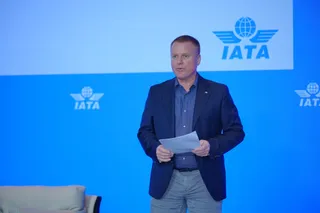Commander of US Army Futures Command Visits Soldier Center
Contact Our Team
For more information about how Halldale can add value to your marketing and promotional campaigns or to discuss event exhibitor and sponsorship opportunities, contact our team to find out more
The Americas -
holly.foster@halldale.com
Rest of World -
jeremy@halldale.com
Gen. John M. Murray, Army Futures Command commanding general, visited the U.S. Army Combat Capabilities Development Command Soldier Center (CCDC SC) at the Natick Soldier Systems Center in Massachusetts.
Murray is responsible for leading a team of soldiers andcivilians to streamline the Army's modernization enterprise under a singlecommand by enhancing efficiency and effectiveness in delivering the technologynecessary to maintain the Army's competitive advantage and win wars.
As part of Army Futures Command (AFC), CCDC SC providesscience and technology solutions to ensure America's warfighters are optimized,protected, and lethal.
Working closely with AFC's Soldier Lethality and SyntheticTraining Environment Cross Functional Teams, the Soldier Center is constantlyworking to strengthen soldiers' performance to increase readiness to ensure soldiersare organized, trained, and equipped for prompt and sustainable ground combat.
Murray's visit was highlighted by sessions about the SoldierSquad Performance Research Institute, or S2PRINT, the Measuring and AdvancingSoldier Tactical Readiness and Effectiveness, or MASTR-E program, and CCDC SC'swork with soldier-borne sensors.
Soldier Center experts also briefed Murray about a wide range of topics, including exoskeleton technology; power and battery advances; Aerial Delivery design and fabrication; Expeditionary Maneuver's LiFi technology and camouflage, concealment and deception technologies; load carriage; and the design and prototyping of a wide-range of clothing and equipment.
Subject matter experts also provided information aboutCombat Feeding's ration development, lab capabilities and soldier studies.
While at Natick, Murray was also briefed on research being performedby the U.S. Army Research Institute of Environmental Medicine (USARIEM).USARIEM is co-located at NSSC and is a frequent soldier research partner withthe CCDC SC.
"We were able to highlight USARIEM's uniquecapabilities as the Army's premier biomedical laboratory for optimizingwarfighter health and performance," said Col. Sean O'Neil, commander ofUSARIEM. "It was a great opportunity to emphasize how we synchronizeefforts across the modernization enterprise; showing how together we optimize theinteractions between the soldier, the technology, and the environment."
Murray toured the Doriot Climatic Chambers, a testingfacility that can replicate world-wide weather conditions. The chambers allowresearchers at CCDC SC and USARIEM to study and improve human performance undera wide range of conditions -- including extreme temperatures -- as well asstudy and improve the performance of equipment.
CCDC SC's scientists and engineers are committed to workingdirectly with soldiers, with soldier input and interaction being key toadvancing the optimization of Soldier performance, improving soldierprotection, and increasing soldier lethality.
"The concept of scientists working with soldiers is very powerful," said Murray.
Source: US Army


.png/r%5Bwidth%5D=320/7f2021f0-9a0d-11f0-b8f7-272ce5993c28-nano-banana-2025-09-24T11-07-03%20(1).webp)